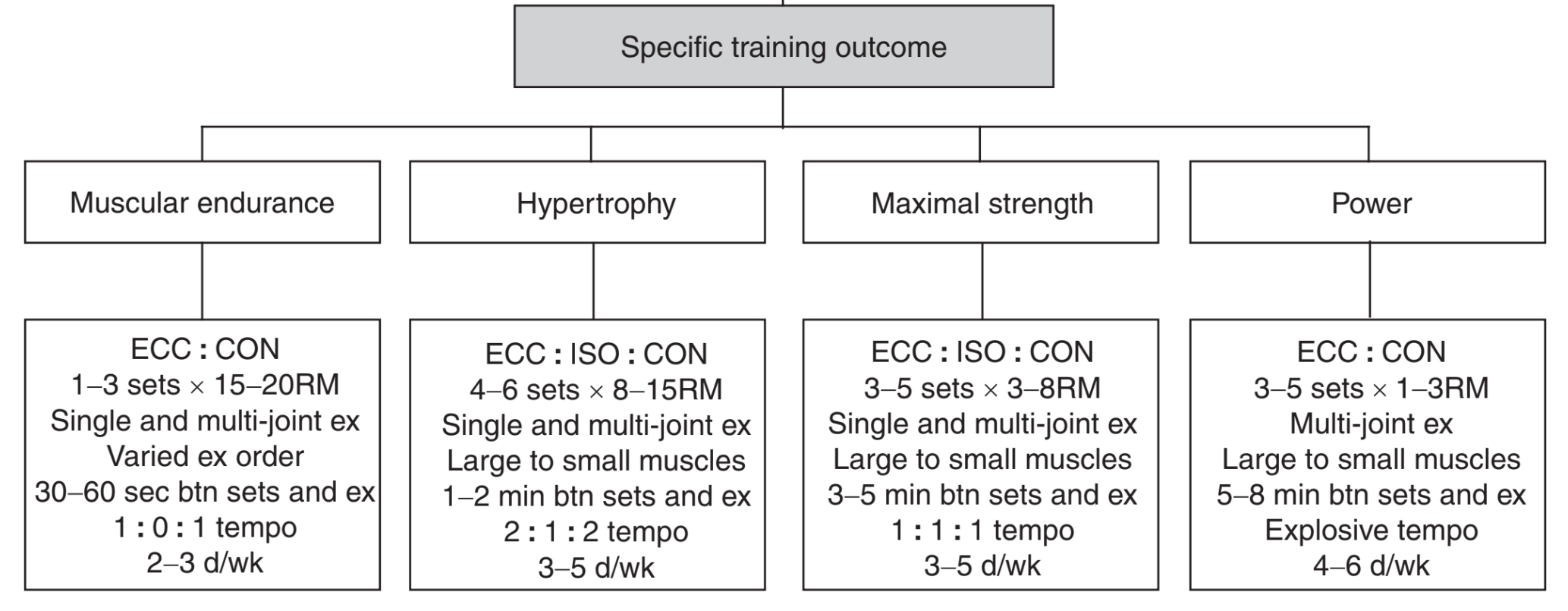Have you ever wondered about the number of sets, repetitions (reps), rest, etc. that you should dedicate to a specific movement or workout? Why those specific numbers of repetitions? Why is there a range of reps recommended rather than a set amount?
We hope to offer some clarity on these topics throughout this series.
If you recall from part 1, we briefly discussed a few of the parameters that are measured in the physical fitness world surrounding motor control. Parameters like strength, power and endurance, and how these things can be improved through resistance training.
In this article we will go deeper into some of the reps, sets, tempo’s and rest periods that have been shown to benefit the development of certain neuromuscular and musculoskeletal parameters.
First Things First. Let’s Speak The Same Language.
Repetitions (reps) – the number of times you perform a specific movement. Movement example being 1 pull-up.
E.g. 3 reps of 1 x pull-up.
Repetition Maximum (RM) – is typically the greatest amount of weight lifted with the intended technique for a specified number of repetitions.
E.g. If a program prescribes 8RM as the rep number, and the athlete can currently perform 12 x body-weight pull-ups; weight will need to be added to the body to identify a load where the athlete can achieve 8 reps.
For an athlete that can achieve 2 x body-weight pull-ups, the 8RM will need to be identified by subtracting body-weight. This can be achieved by partially standing on a box or using a resistance band to assist with elevating the body.
Note: It is recommended that the weight is increased when the individual can perform the current weight for one to two repetitions over the desired number.
Sets – the number of times you repeat the prescribed number of repetitions.
E.g. 6 sets of 3 reps; for a total of 18 repetitions
OR 6×3.
Rest Period – the period of rest between sets.
E.g. 6 sets x 3 reps, with 60 seconds rest
OR 6×3, 60secs.
Muscle Contraction Types
Eccentric contraction – controlled lengthening of a muscle while under load. E.g. The descending phase of a pull up (for the biceps and latissimus).
Isometric concentration – a controlled contraction that maintains a static length of a muscle under load. E.g. Maintaining a static position at the top of the pull up.
Concentric contraction – controlled shortening of a muscle while under load. E.g. The ascending phase of a pull up.
Rep Tempo – the prescribed length of time to perform for each muscle contraction type per rep.
E.g 1. 4 second eccentric, 2 second isometric, 4 second concentric, 0 second rest
OR 4ecc, 2iso, 4con, 0rest
OR 4240.
Full description. 6×3, 45sec, 4240.
E.g 2. 4ecc, 1iso, Fast as possible con, 1rest.
OR 41X1
Full description. 6×3, 45secs, 41X1.
Now that we are speaking the same language, time to explore some of the tried and tested resistance training programs out there.
What’s In a Number?
Something to note for the numbers surrounding program design, the practitioners are almost always ahead of the science.
Meaning, there are people out there creating world-beating programming that science has not yet analysed or researched.
Always keep in mind that although there are ‘rules’ out there regarding the numbers, humans are only at the very beginning of understanding our own capacity, and today’s ‘perfect’ numbers will likely be replaced in years to come.
There are a few possible reasons for this:
Programs are ever-evolving inline with the ever-evolving athlete and sports.
Program design is often sport- and individual-specific (i.e. not every program will work for every sport or person).
Many variables influence the results from training programs – sleep, nutrition, stress, genetics, etc.
Too few people that train are interested in science.
Too few scientists are interested in researching training.
Too little sharing of data in the elite sports field. After all, if you or your athlete became a world champion, would you share your training secrets?
The list goes on..
When considering the above, program design is more of an art than a science, with each ‘program designer’ applying their own anecdotal evidence and biases to their programming.
Now the Numbers
Figure 1. Program design for specific parameter outcomes (1). RM = rep maximum. Min = minute/s. btn = between. Ex = exercise. d/wk = days per week.
Hopefully our earlier language lesson has explained Figure 1 but I will use ‘Muscular endurance’ as the example to explain fully.
Example – Muscular endurance.
Reps – 15-20RM
Sets – 1-3
Rep tempo in this example rep tempo has been written as a ratio rather than a specific time. The ratio is 1:1 for eccentric to concentric contraction time, with 0 for isometric or rest.
Rest Period – 30-60 seconds between sets
Days per week – 2-3
We’ll give you a week to digest the information and make sense of the table before we teach you how to apply it into your own training program in What’s The Point of Training? Part 3.
Sign up here for all of the latest Bould Move news.
We can not wait to move, train and climb with you at Bould Move Sunshine Coast.
Stay Bould.
References:
- Bird, S.P., Tarpenning, K.M. and Marino, F.E., 2005. Designing resistance training programmes to enhance muscular fitness. Sports medicine, 35(10), pp.841-851.
